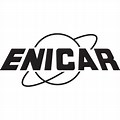Difference between revisions of "Enicar"
| Line 5: | Line 5: | ||
Oskar Racine, Ariste's brother, joined the company in 1918. He owned a shaft factory in Biel, which he closed down in May 1930. Both Ariste and Oskar were brilliant salesmen and were quite ingenious. On April 11, 1932 the company was named ENICAR Société Anonyme (equiv. to Ltd.), with a nominal capital of 50,000 Swiss Francs. In 1934 Ariste Racine Junior, son of Ariste and Emma, entered the company and as per October 30, 1939 he became general director. | Oskar Racine, Ariste's brother, joined the company in 1918. He owned a shaft factory in Biel, which he closed down in May 1930. Both Ariste and Oskar were brilliant salesmen and were quite ingenious. On April 11, 1932 the company was named ENICAR Société Anonyme (equiv. to Ltd.), with a nominal capital of 50,000 Swiss Francs. In 1934 Ariste Racine Junior, son of Ariste and Emma, entered the company and as per October 30, 1939 he became general director. | ||
| − | ENICAR did good | + | ENICAR did good business with many military forces all over the world during both World Wars. After W.W. II ENICAR had to focus on non-military models. Ariste Racine Jr. was ready. In 1953 a new factory and high end laboratory in nearby Oensingen was opened, where all the movements were 'ultrasonically' cleaned. A new modern method that was printed or engraved on all watches as a marketing tool. ENICAR was also able to epilamize (= avoiding oil to run on) surfaces of its movements which reduced wear and service costs and enhanced reliability. |
| + | |||
| + | Modern production methods were introduced and sales rocketed. In the early 1950's over 70,000 movements were produced annually. ENICAR developed interesting watches, which were sturdy and reliable. On July 16, 1954 ENICAR received its first 'Gangschein' (certificate of accuracy) of the Neuchâtel forerunner of the COSC (Contrôle Officiel Suisse des Chronomètres = Swiss Official Inspection of Chronometers; founded in 1973) for its 1010 Caliber. | ||
| + | |||
| + | A waterproof wrist watch with a newly developed case (with bayonet lid) was introduced as '[[Enicar Sea Pearl 600|Seapearl]]' in 1955; its back has an engraved open oyster. | ||
Revision as of 22:58, 20 May 2020
History of Enicar
The Racine family, based in the Jura, was a well-known family of artisans. For many centuries they were involved in arts and craftsmanship. On October 1, 1913 Ariste Racine (1889 - 1958) and his wife Emma Blatt started a 'Manufacture d'Horlogerie Ariste Racine' in the Rue du Crêt 24 in La Chaux-de-Fonds. As the name 'Racine' was already a trademark, registered since 1870 by Jules Racine Sr., Emma Racine-Blatt proposed an anagram (or levidrome) of the family name: 'ENICAR'. Ariste Racine registered his manufacture and that brand name on January 6, 1914.
Oskar Racine, Ariste's brother, joined the company in 1918. He owned a shaft factory in Biel, which he closed down in May 1930. Both Ariste and Oskar were brilliant salesmen and were quite ingenious. On April 11, 1932 the company was named ENICAR Société Anonyme (equiv. to Ltd.), with a nominal capital of 50,000 Swiss Francs. In 1934 Ariste Racine Junior, son of Ariste and Emma, entered the company and as per October 30, 1939 he became general director.
ENICAR did good business with many military forces all over the world during both World Wars. After W.W. II ENICAR had to focus on non-military models. Ariste Racine Jr. was ready. In 1953 a new factory and high end laboratory in nearby Oensingen was opened, where all the movements were 'ultrasonically' cleaned. A new modern method that was printed or engraved on all watches as a marketing tool. ENICAR was also able to epilamize (= avoiding oil to run on) surfaces of its movements which reduced wear and service costs and enhanced reliability.
Modern production methods were introduced and sales rocketed. In the early 1950's over 70,000 movements were produced annually. ENICAR developed interesting watches, which were sturdy and reliable. On July 16, 1954 ENICAR received its first 'Gangschein' (certificate of accuracy) of the Neuchâtel forerunner of the COSC (Contrôle Officiel Suisse des Chronomètres = Swiss Official Inspection of Chronometers; founded in 1973) for its 1010 Caliber.
A waterproof wrist watch with a newly developed case (with bayonet lid) was introduced as 'Seapearl' in 1955; its back has an engraved open oyster.
There are recorded at least 136 brandnames used by Enicar including Longeau, Etsira, Savillon, Alprosa, Swisbaby, Swisboy, Teddy, Chrono M, Sykos and Chromicar.
Birks Department store in Canada often branded Enicar watches both under the Birks and Rideau names. Healthways, Aqua-lung and Chronosport models are all branded Enicar watches as are Longeau.
Notable Models
- Enicar Sea Pearl 600
- Enicar Sherpa Diver 600
- Enicar Sherpa Dive
- Enicar Sherpa Guide
- Enicar Sherpa Jet
- Enicar Sherpa Graph

